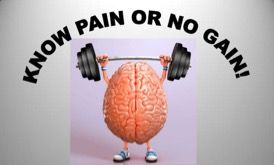Nikita recently attended a seminar hosted by a team of psychologists, physiotherapists and exercise scientists from NeuRA. At Butel Health Services we strive to give our patients the best level of care by keeping up with research, so this is a glimpse into what’s new in the world of pain science. For more information, feel free to chat with any our physiotherapists at your next consult.
As health professionals, our understanding of pain has changed dramatically in recent years due to emerging neuroscience research. We still don’t know everything about pain, but we’re a lot closer than we were 10, or even 5 years ago. Here is a quick guide to understanding pain based on some of the latest research.
Why do you experience pain? Why do some treatments work for some people and not for others? How do your beliefs about pain affect your experience? In order to get the answers to these questions, we first need to understand what pain is.
Myth 1: Pain is caused by damage to the tissue
Maybe you've heard some of these phrases:
- My slipped disc is causing my pain
- I'm out of alignment and it makes the pain worse
- I feel like my bones are being crushed
- I pulled my back out
The first thing to understand is that your pain is definitely real BUT that this pain is not necessarily caused by tissue damage.
A 2015 study by The American Journal of Radiology showed that when 3000 people without any pain had their backs scanned, 30% of people in their 20s had significant findings, whether it be a bulging or slipped disc, joint degeneration or bony deformities. This statistic is increased to 60% of people in their 50s and 84% of people in their 80s.
And yet, you may have a bulging disc and experience excruciating pain. Or your neighbour has the same level disc bulge but only has a little bit of pain. This means that the pain you experience is not directly correlated with physical damage to tissues/structures.
Myth 2: Pain is a feeling
You may not know this, but our bodies do not have any receptors for pain or any pain fibres at all. We have mechanical (pressure, touch, texture), thermal (hot/cold) and chemical (acidic/alkali) receptors all over our body that send information to the brain. This information is then processed along with other information such as the current environment, increases in stress or heart rate, previous experiences etc. and the brain sends out a response according to its perceived level of danger. This danger message is the experience of pain and will determine how our body reacts to protect our body from the perceived threat. So pain is an experience caused by the brain, rather than a feeling in itself. Pain is a RESPONSE caused by the brain.
Myth 3: Everyone experiences pain, therefore if my pain is more severe, my problem is more severe
Now that we know that pain is an experience produced the brain and not a direct feeling, it is easier to understand that everyone’s pain experience can be different depending on their brain’s processing of a stimulus. Pain is the result of complex, mostly sub-conscious, processing within our brain. It is a multidimensional experience and is highly dependent on the meaning an individual will associate with their perceived level of danger. This is why we hear stories of soldiers being able to continue fighting after a gunshot wound or severe injury – the need to get out of the battlefield is greater than the danger of a non-fatal wound to their bodies.
This may not answer all your questions, but it is just the tip of the iceberg when talking about pain. Come into the clinic for a chat and stay tuned for more information on chronic pain.

